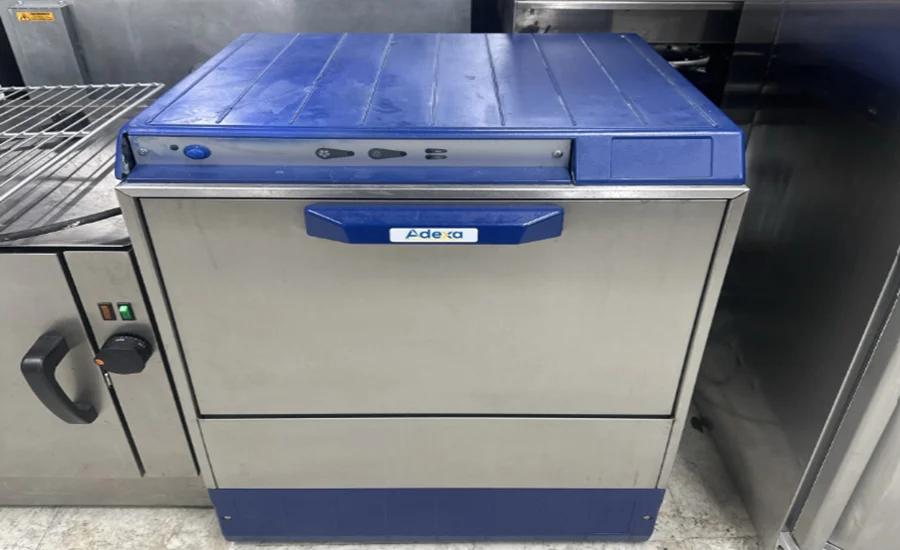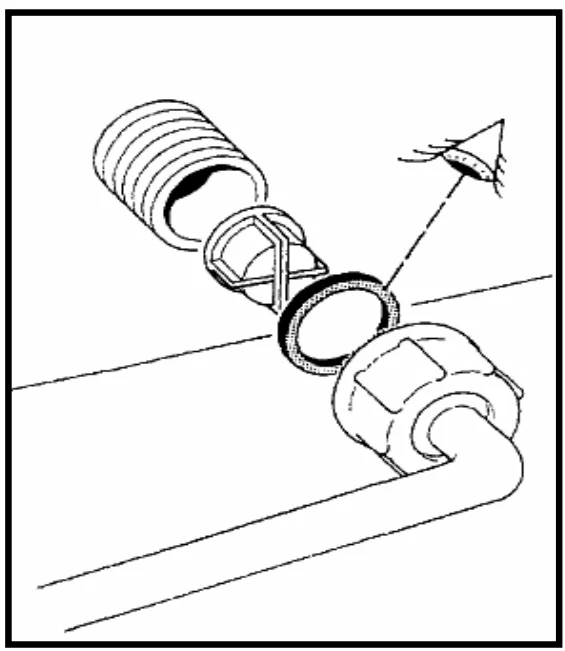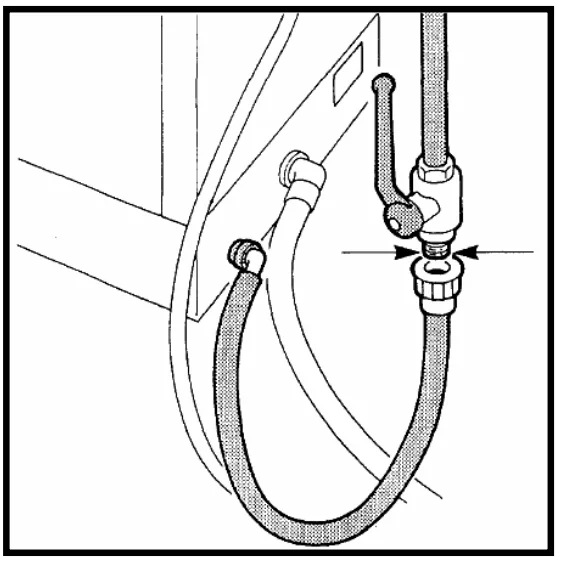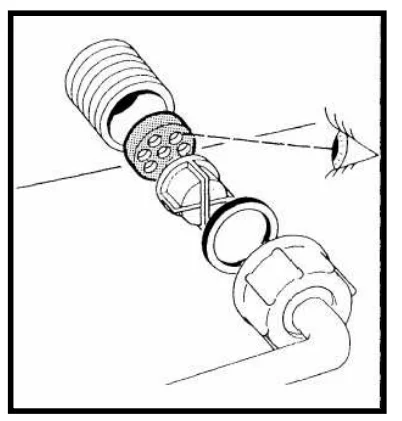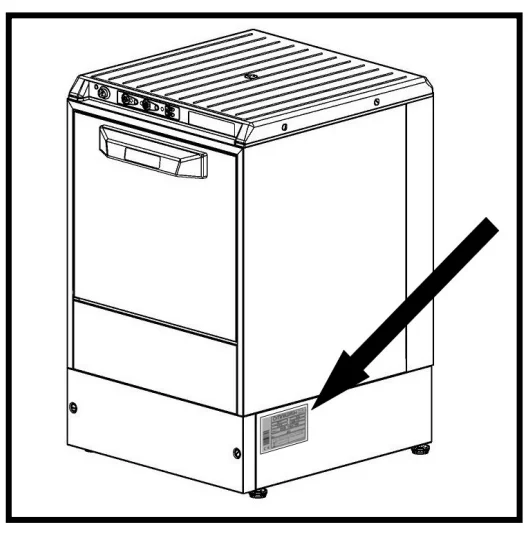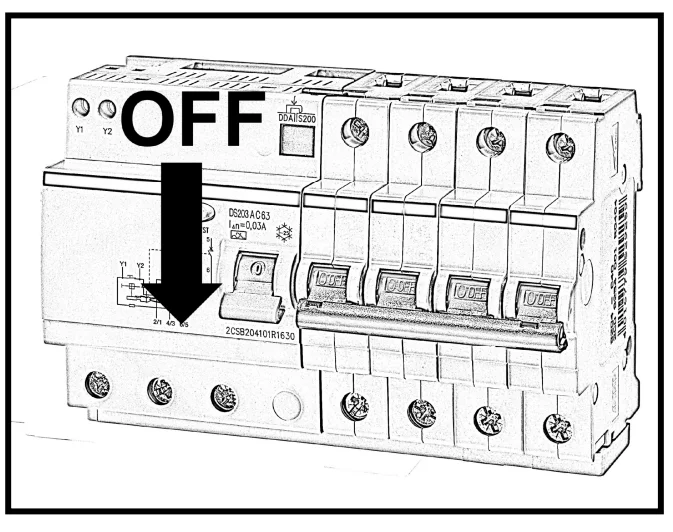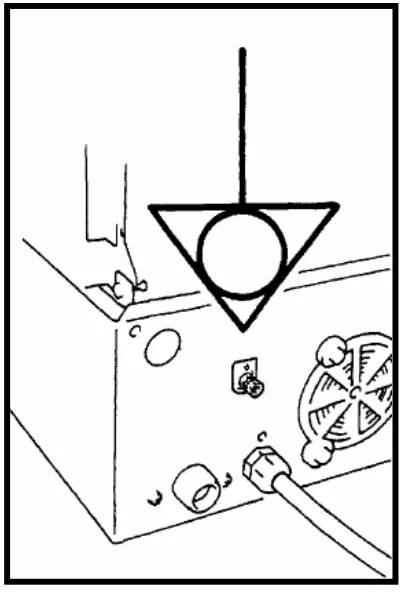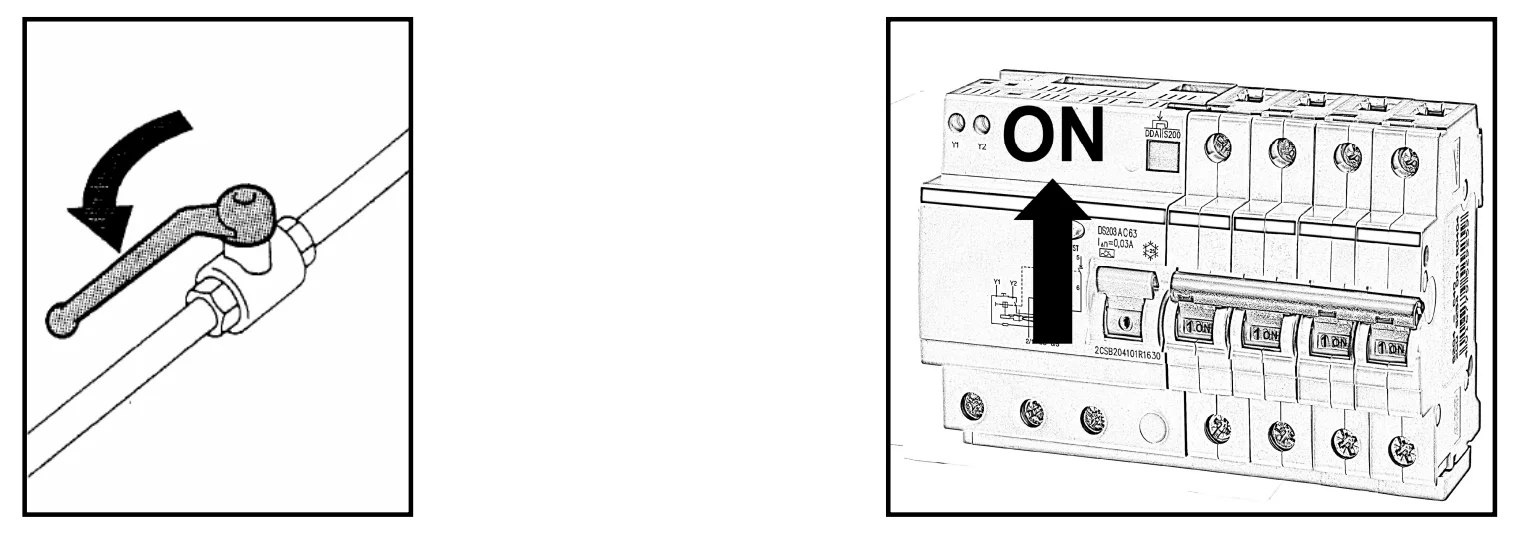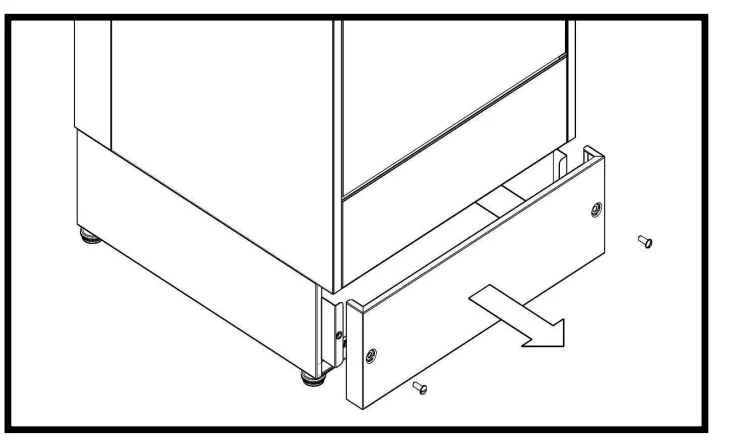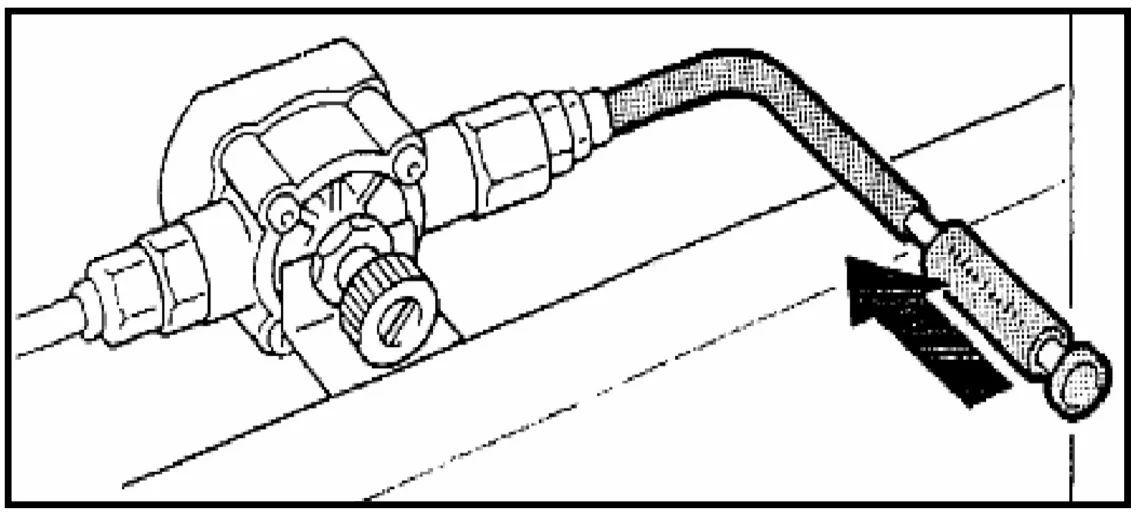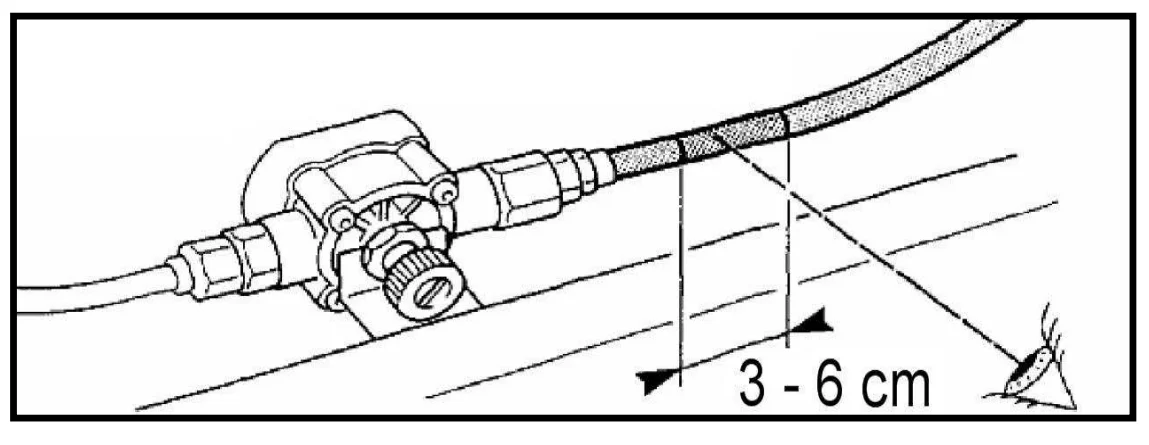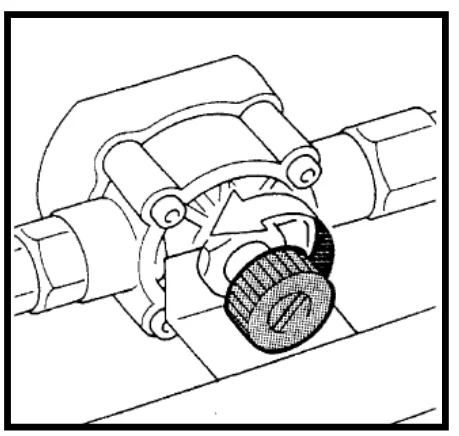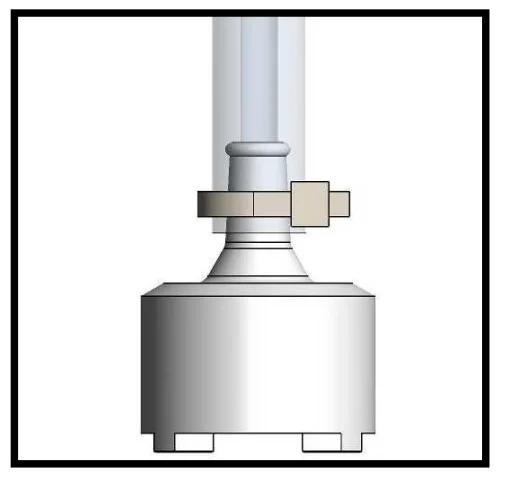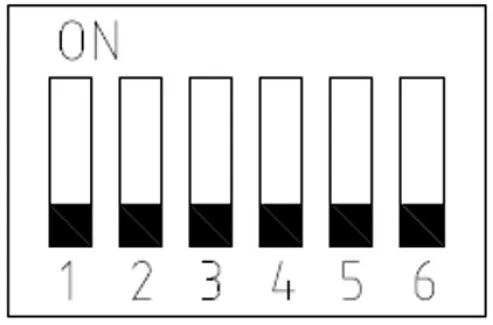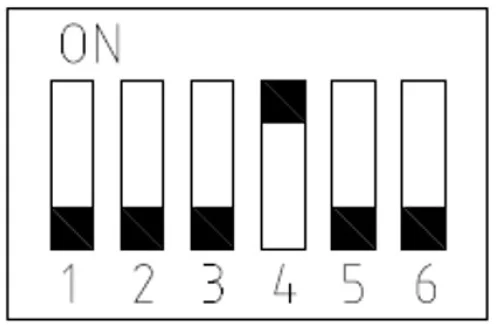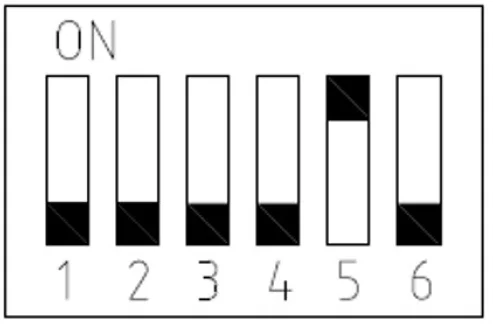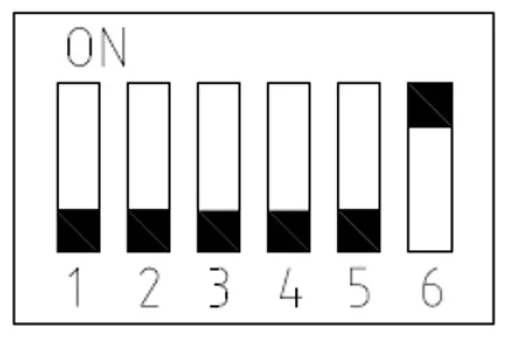
Adexa 5000ST and 4000BT Gravity Drain System
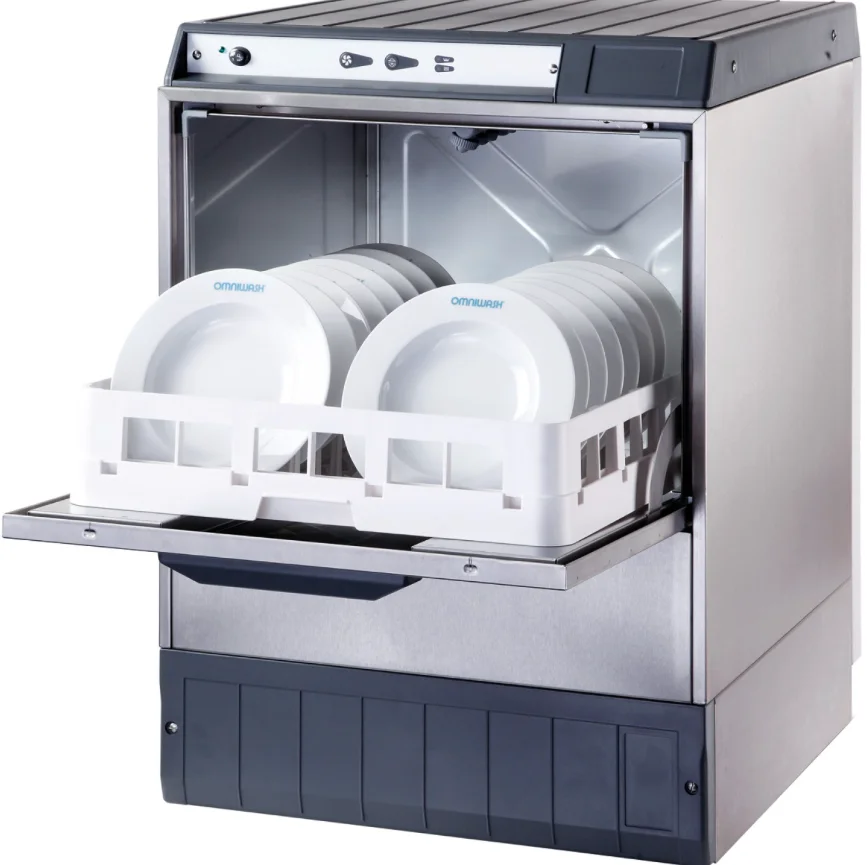
GENERAL INFORMATION
- This dishwasher is in compliance with the provisions currently in force concerning safety. Improper use can cause damage to people and / or property. Before starting the machine, carefully read these instructions which contain important information for installation and safety. This manual is an integral part of the dishwasher.
- The dishwasher is only intended for professional use. It is designed for washing dishes, glasses (cups, plates, cups, bowls, trays, cutlery) and in similar areas in the field of food and catering and complies with international electrical and mechanical safety and according to EMC standards.
- Personnel operating the machine must be regularly trained. Only trained personnel should use it. The dishwasher is not suitable for use by minors and persons with reduced physical or sensory abilities, nor by people with psychological problems. The use of the machine by these people is permitted only under the supervision of a responsible person. Do not allow children play with the dishwasher.
- The manufacturer disclaims any liability for damage to persons or property caused by disregarding instructions of this booklet, by incorrect use or by interference with any part of the dishwasher. Replace any defective parts only with new original parts.
- This is the only way that the manufacturer guarantees the observance of safety standards and the correct operation of the machine.
- Do not use the dishwasher as a ladder or to support people, objects or animals. Leaning or sitting on the open door could cause it tipping over and endangering people. Close the door to prevent people tripping over it.
- Before installing this appliance, check that there are no damages visible. For your safety, never operate on a damaged machine.
- The dishwasher must be installed and repaired only by authorized personnel. Work performed incorrectly can cause serious hazards to the user, for which the manufacturer is not responsible.
- Please ensure that earth connection as been done correctly. In case of doubts, have the system checked by a qualified technician.
- The manufacturer is not liable for any damages due to the interruption or absence of earth connection.
- Follow installation instructions indicated in the installation manual. Prior to an electrical connection, it is necessary to compare the technical data, voltage and frequency indicated on the machine nameplate with those indicated on the mains supply. The electrical supply data must match with the machine requirements to prevent damage on the machine. In case of doubt, have the system checked by a qualified electrician.
- Do not connect the machine to the mains with extensions because they do not guarantee the sufficient safety.
- To perform the installation work or any maintenance or repair, disconnect the machine from the mains. Operate on the machine only when the isolating switch is off.
- Be careful when handling chemical products! These products, such as detergent and rinse aid, can be corrosive or irritant. Follow the safety regulations on the packaging! Wear goggles and gloves! Carefully follow the safety instructions provided by manufacturers.
- Do not inhale powder detergent. Ingesting detergent can cause burns to the mouth and throat and lead to suffocation.
- After any work done to the water supply, purge the water pipes to the dishwasher to avoid damaging or clogging the water inlet valve.
- The machine and the surrounding area should not be sprayed directly with water.
- Do not open the door when the machine is operating. There is a DANGER of splashing with hot water. If you open the door at the end of the cycle , take care not to touch the heating elements located into the wash tank (danger of burns).
INSTALLATION AND START UP
The installation of the machine must be carried out only by qualified technical personnel, in accordance with these instructions and in compliance with the regulations in force.
- Remove the packing and the polystyrene from the machine and check for damages. In case of damages, they must be notified in writing to the carrier. The packaging components (plastic bags, polystyrene foam, nails, etc.) must be kept away from children and pets, as potential sources of danger. All materials used for packaging are compatible with the environment. They can be stored safely or be disposed of to an appropriate waste disposal center. The components of wood and cardboard can be disposed of in accordance with environmental regulations. When disposing of the machine, avoid dispersion in the environment; dismantling must be in compliance with current standard in force.
- Check that the place where the machine will be installed allows easy maintenance. In particular, check that there is sufficient ventilation and no heating sources in the surrounding area nearby the machine.
ATTENTION: The Electric system of the places where industrial dishwashers are installed must comply with national and local regulations in force.
- The manufacturer disclaims any liability for any direct or indirect damage to people or property for not observing local laws.
- Before installation of machine, check the surrounding area to check if any objects could be damaged by steam or splashes of washing solution.
- Open the door and remove the following equipment: basket, cutlery basket, inlet and outlet tubes, rubber feet, user manual and installation manual with a wiring diagram and certificate of conformity.
- Remove the four rubber feet and screw them in the threaded holes on the bottom of the machine. The dishwasher must be steady and perfectly levelled. Any irregularities in the floor can be compensated using the four adjustable feet.

- Connect the inlet tube supplied with the machine to the solenoid valve. Check that the gasket seal is installed.

- Connect the other end of the water tube to the 3/4″ BSP male fitting valve. The valve must be installed in an easily accessible place. Make sure that after installing, the pipe is not crimped or crushed.

ATTENTION!
The dishwasher can be connected both to the cold water system (minimum temperature + 5 ° C) or to the hot water system (maximum temperature +50 ° C) with appropriate loading pipe in compliance with the standard EN 61770. For connection to the water mains use only new hoses. Old or used hoses must not be used. A good wash result will be possible if the machine is filled with good water quality with a max hardness (calcium and magnesium) of 3° to 5° dH (5° to 9°F). Above this value there could be lime scale deposits in the rinse jets, restricting the water flow during rinsing and filling. This can lead deposits of lime scale or detergent remaining on the ware and so bad wash result. In addition to this, lime scale will deposit on heating elements, shortening their life and increasing the amount of energy required to heat the water. Therefore, the use of hard water in the machine will invalidate its warranty. For best results, when installing the machine, if the hardness of water is not suitable, we suggest you to install a
water softner (if this is not already installed on the machine). Do not use osmosis water and do not connect the machine to any appliances with osmosis system.
- Soft water: up to 3°dH (5°F)
- Medium water: 3° to 5° dH (5° to 9° F)
- Hard water: above 5°dH (9°F)
- The machine must be connected to water mains in accordance with current local regulations in force. The water must at least meet the requirements for drinking water provided by the regulations. A high iron content in the water can cause rust on the dishes and in the machine. If the chloride content in the water is greater than 100mg / l, it will significantly increase the risk of corrosion. In certain areas the impurities of water can cause mechanical problems, so we suggest to check the water quality. The water inside the dishwasher is not drinkable.
- Verify that the mains pressure is not less than 2 bar (200 kPa) or greater than 4 bar (400 kPa).
- If the mains pressure is below 2 bar (200 kPa) a booster pump should be installed.
- In case that the mains pressure is greater than 4 bar (400 kPa), it may be appropriate to install a water flow reducer (which is provided with the machine) before the solenoid. With a flow reducer inserted, the maximum pressure is the one indicated on the inlet pipe.

- Use clamps to connect the drain discharge pipe to the drain outlet. Make sure there are no kinks or bottlenecks in the tubing before and after installation; also check that the drain point is at an height lower than the external connector of the dishwasher.

- If the point of discharge is located the same height or higher than that one of the bottom of the machine, a drain pump should be installed.
ATTENTION
- The drain pipe must be fitted with a TRAP to avoid the possible return of unpleasant smell.
- The flow capacity of outflow of the waste system must be higher than that one of the waste system of the machine.
ELECTRICAL CONNECTION
ATTENTION
- The electrical connection of the machine and of any additional equipment should be undertaken only by licensed and qualified technicians in accordance with current regulations.
- The machine must be serviced with the values of power, voltage, frequency and protection as specified on the name plate.

- Verify that the wiring network is designed with grounding device and that an overvoltage category III isolating switch is installed (see EN 60204). This switch should be for the exclusive use of the dishwasher and positioned closed to the machine, for an easy access.
- Disconnect power from the main switch by switching it “OFF”.

- Connect the power cable of the machine.
ATTENTION
- The neutral wire must be correctly installed to the switch.
- The connection of the power cable to the dishwasher is “Y” type.
- The power cable can be replaced only by authorized and qualified personnel or by the manufacturer.
- Connect the earth wire of the power cable to an efficient earth. The electrical safety of the machine is ensured only by a correct earth connection.
- The equipment must also be included in an equipotential system whose effectiveness needs to be properly verified as required by legislation in force. The connection is made by a screw marked with “EQUIPOTENTIAL” positioned at the back of the frame.

ATTENTION
- The dishwasher is without tension, so in safe position only when the mains witch is turned off.
CONTROL PANEL
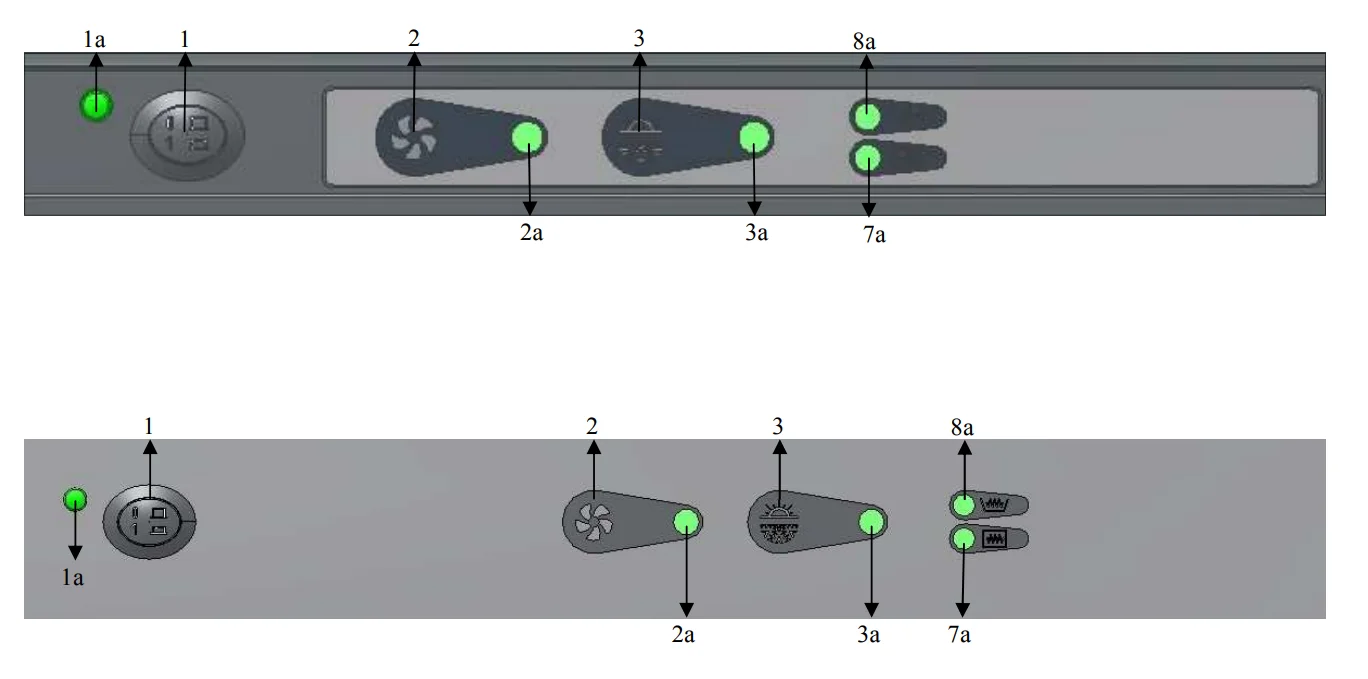
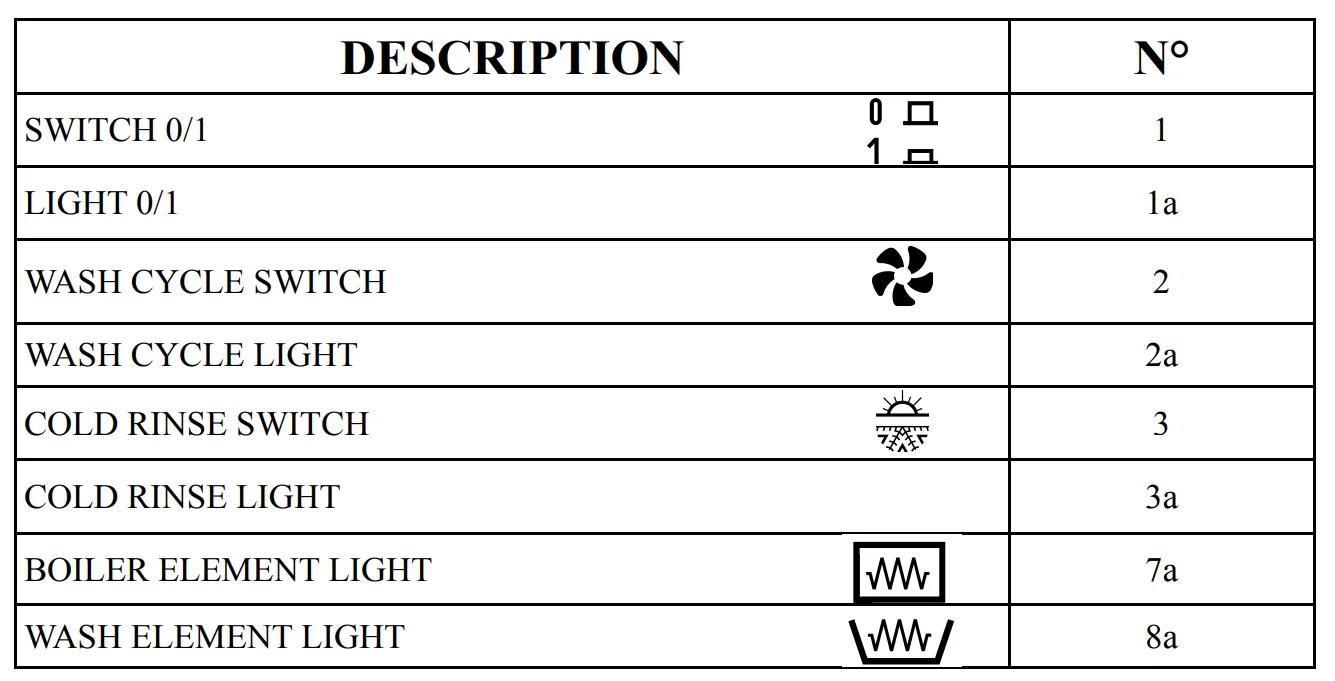
OPERATION
ATTENTION: The fist operation of the dishwasher MUST be performed by authorized and qualified personnel who will also give instructions concerning the machine.
- Open the water supply and switch on the main electrical supply.

- Open the dishwasher door and check that the wash arms are installed. Verify that the suction filter pump is fastened in the correct position and that the “overflow” is installed. Close the door.
- Pressing the switch 0/1 (1) to 1, the indicator light will turn on (1a) and the machine will make a check on the lights. After that, the machine will he set into a stand-by mode (the wash cycle light – 2a – blinks).
- Pressing the wash cycle button (2), the machine will start to fill with water. During the filling the cycle light will blink.
- When the filling of the machine is completed, all lights will be off, unless the 0/1 light.
- In this state the machine has full control over the tank and boiler temperatures, so if the temperature of the boiler is lower than the pre-set temperature, the machine will activate the boiler heating element, until when the correct temperature will be reached. The boiler heating light (7a) will be on.
- Once the boiler has reached the set temperature, the heating element will turn off and accordingly the corresponding light (7a) will turn off. Then the machine will check the wash tank preset temperature and in case it’s lower , the heating element will activate until the correct wash temperature is reached. The wash tank heating elements is indicated by the corresponding light on the control panel (8a). When both temperatures, boiler and tank, will be reached, both lights (7a and 8a) will be off.
ATTENTION
- The temperatures of the tank and boiler CAN’T BE modified.
- They are already set at 80°C for the boiler and at 53°C for the tank.
- If the temperature of the tank is higher than 65°C,
- then some cold water will enter into the tank in order to reduce the temperature at the set temperature.
- When the machine is in the status of “full machine”, wash cycle or cold rinse can be started.
ATTENTION
- The dishwasher usually has no detergent dispenser.
- In this case you can fill manually the tank with solid or liquid detergent.
- Use only industrial dishwasher detergent, preferably liquid one.
- WASHING:
- Press the cycle button (2); the corresponding indicator light (2a) will turn on.
- Wait until the machine has finished the cycle / hot rinse.
- At the end of the cycle (light 2a off), open the door and remove the rack.
ATTENTION
- All machines are equipped with Interlock function. This device allows the machine to perform the rinse at the end of wash cycle only when the preset temperatures have been reached.
- If the wash cycle has started before the rinse boiler heating lamp (7a) has switched off, then the wash cycle will be longer and will continue until when the set temperature is reached.
- It is possible to deactivate the Interlock function by modifying the DEEP SWITCH positioned on the electronic board (see page 15 – DEEP 4 ON).
ATTENTION
- Do not open the door until the machine has finished the cycle. In case the door is opened during the cycle, the cycle will stop. Closing the door, the cycle will continue from the point where it was interrupted.
- COLD RINSE BUTTON
- Press and hold the cold rinse button (3). The indicator light (3a) will turn on. The machine will now rinse with cold water.
- Switch off the cold rinse button (3). The corresponding indicator light will turn off.
ADJUSTING CHEMICAL DOSING
ATTENTION: It is important to respect safety regulations when using corrosive products. We recommend the use of gloves and glasses
RINSE AID DISPENSER—HYDRAULIC PUMP
- Remove the front panel by loosening the screws. This will give access to the dispenser.

- Fill the silicone tube of the rinse-aid pump with water, using a water pistol.

- Press the cycle button (2). This will start the wash cycle (pump will start washing), the indicator light will turn on (2a).
- Wait for about 20 seconds and open the door slightly. This will stop the wash cycle.
- Visually check that the amount of liquid in the silicone tube is correctly sucked. We recommend to use aprox 0,3g of product for each cycle when water hardness is soft and 0,6 g when medium. Anyway, please refer to the technical sheet of the used product.

- Adjust the pump sucked volume by regulating the screw.

- Restart the machine by closing the door and wait again for 20 seconds. Then re-open the door slightly.
- Check again the amount of liquid sucked; if it is not correct then adjust again with the screw.
- Repeat again the operation closing door / opening and regulating the screw until when the required amount of product is sucked.
- Re-install the filter at the end of the silicone tube and insert it into the rinse aid bottle. Re-assemble the front panel of the machine.

PERISTALTIC DETERGENT PUMP (OPTIONAL – ONLY ON SOME VERSIONS)
- Insert the filter at the end of the detergent tube and place it into the bottle of detergent.

- The detergent dispenser works during the filling up of the machine and durino the rinsing at the end of each wash cycle. Perform a series of washes and check the soil removal on the dishes. Determine if it is necessary to increase or decrease the quantity of product. If it’s necessary, open the front panel of the machine and regulate with the adjusting screw.

- Finally reassemble the front panel on the machine.
ATTENTION – GENERAL NOTES
- It is important to respect the safety regulations for the use of corrosive products. We recommend the use of gloves and glasses.
- During the installation of the machine, the chemical dosing pumps must be correctly adjusted.
- Please remember that the quantity of detergent and rinse aid depends on the quality of products and the hardness of the water. Refer to the instructions of the chemical manufacturer.
- Every time you change the products (detergent or rinse aid) it is NECESSARY to clean both systems by making the tubes sucking some water for some cycles.
ONLY USE PRODUCTS FOR SPECIFIC INDUSTRIAL DISHWASHER USE.
- We recommend to replace either rinse and detergent tubes at least every 12 months.
- Failure to comply with these instructions will void the warranty granted on the machine.
TROUBLESHOOTING
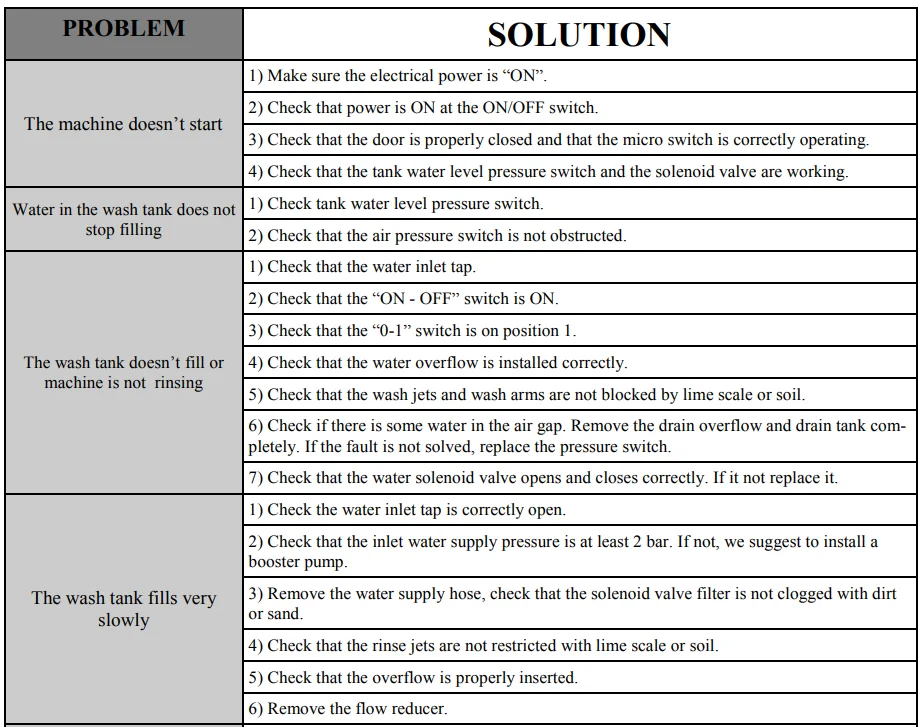
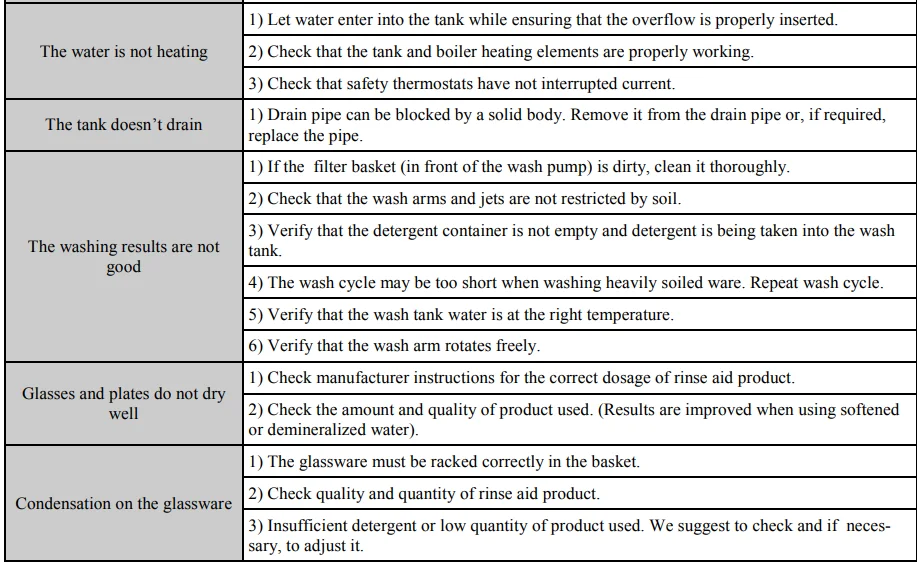

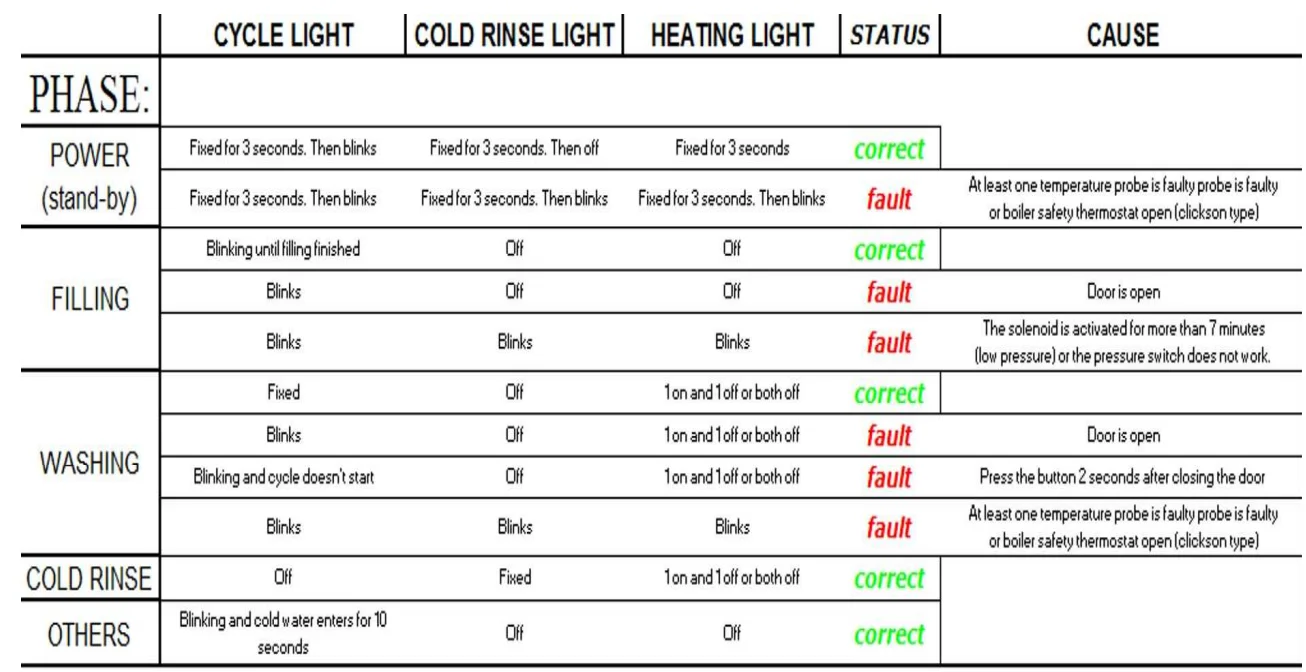
CARD MODEL ST
Deep on the standard position. (interlock working, wash cycle 120″)
Deep 4 ON
Interlock not working
Deep 5 ON
The wash cycle starts only when the temperature of the machine is attempted (so when the elements are off)
Deep 6 ON
The length of the wash cycle is increased of 30 seconds.
For more manuals by Adexa, visit ManualsLibraryy
Adexa 5000ST and 4000BT Gravity Drain System-FAQs
How do I manually drain my Adexa dishwasher?
For the DW500P model, turn off the machine using the ON/OFF switch, open the door, and remove the drain pipe. Keep the door open while draining manually.
Can the dishwasher drain automatically?
Yes, most models have a drain pump activated by pressing the Drain button for a few seconds, which empties the wash tank automatically.
Why is my dishwasher not filling with water?
Check that the water inlet tap is open, the ON/OFF switch is on, the “0-1” switch is in position 1, and the water overflow is correctly installed.
How often should I drain a commercial dishwasher?
Ideally after each meal shift, or at least three times a day, to remove food debris and maintain cleaning efficiency.
Can I pour boiling water down the dishwasher drain?
Yes, a small cup of boiling water can help clear minor clogs before running a full cycle.
What are the drain installation rules?
The dishwasher must connect to a waste line using an air gap or a high loop (minimum 32 inches), depending on local codes, to prevent backflow.
What is the most common reason a dishwasher won’t drain?
Clogs in the filter, air gap, drain valve, drain hose, or garbage disposal are the most frequent causes.
How do I check or clear the dishwasher drain manually?
Turn off power, remove any standing water, inspect the drain filter, and check the drain hose for kinks or blockages.
Can the dishwasher drain directly into the waste line?
Yes, but it must comply with local plumbing codes and use an air gap if required to prevent siphoning.

